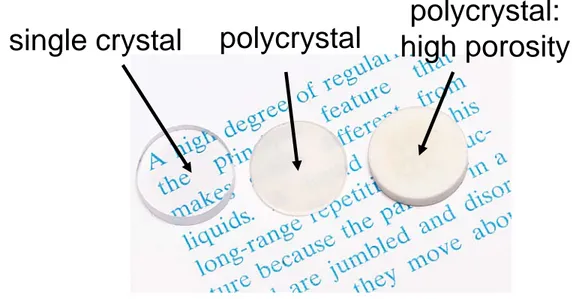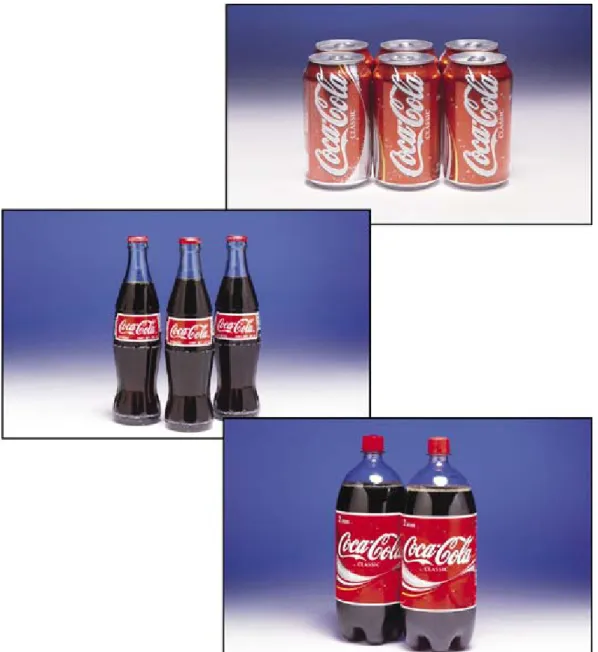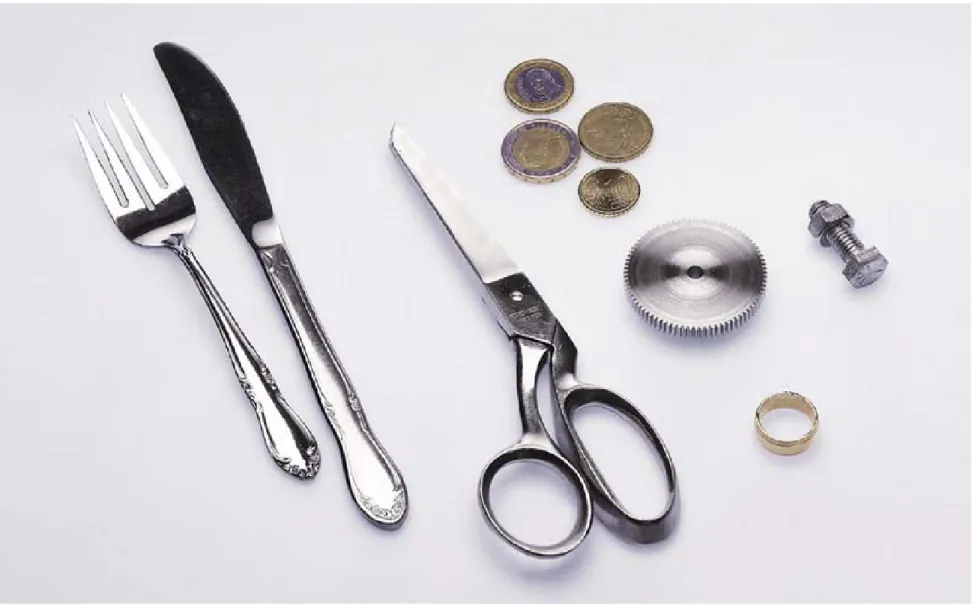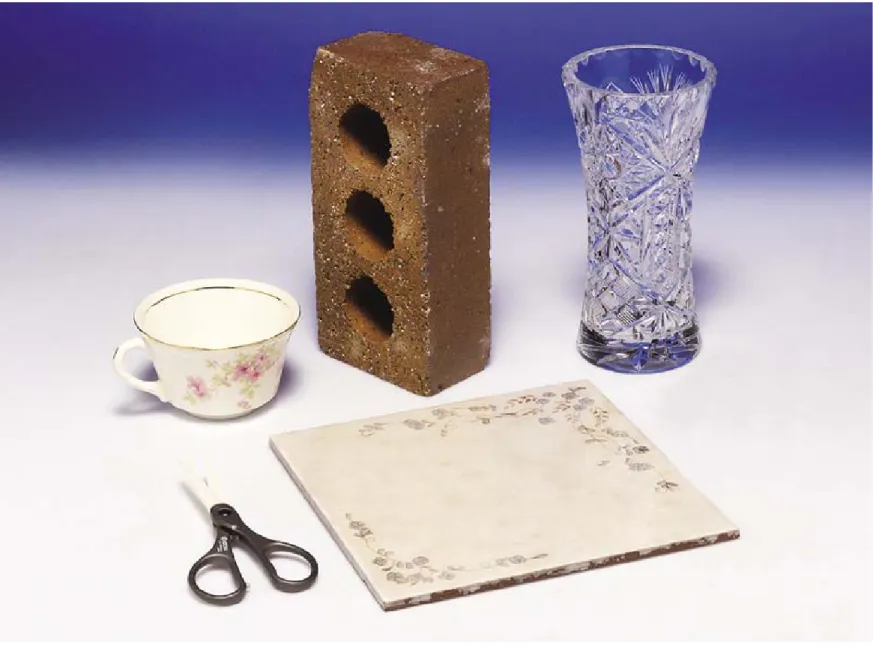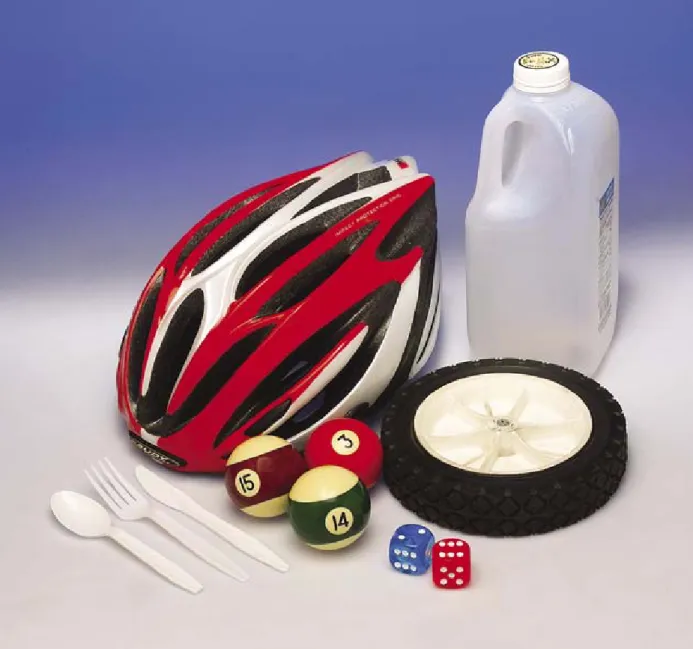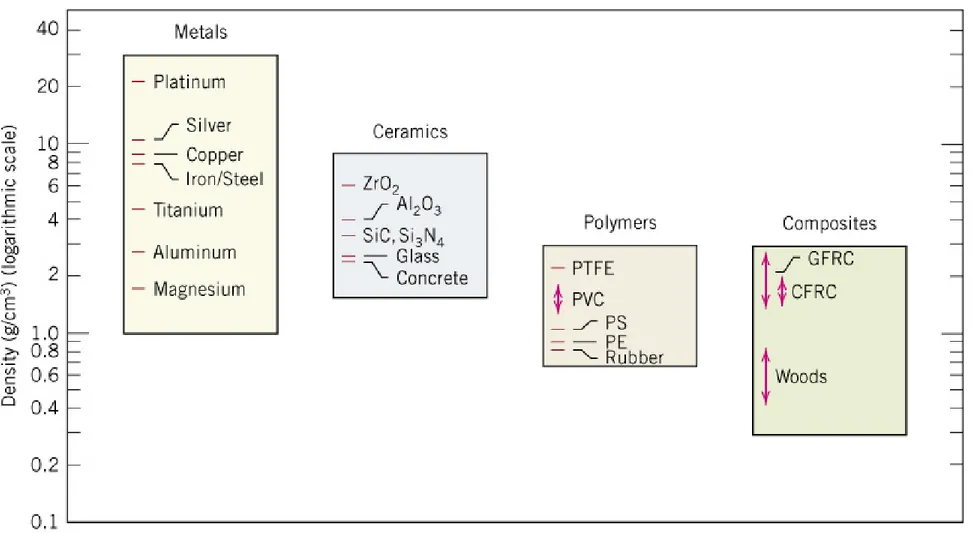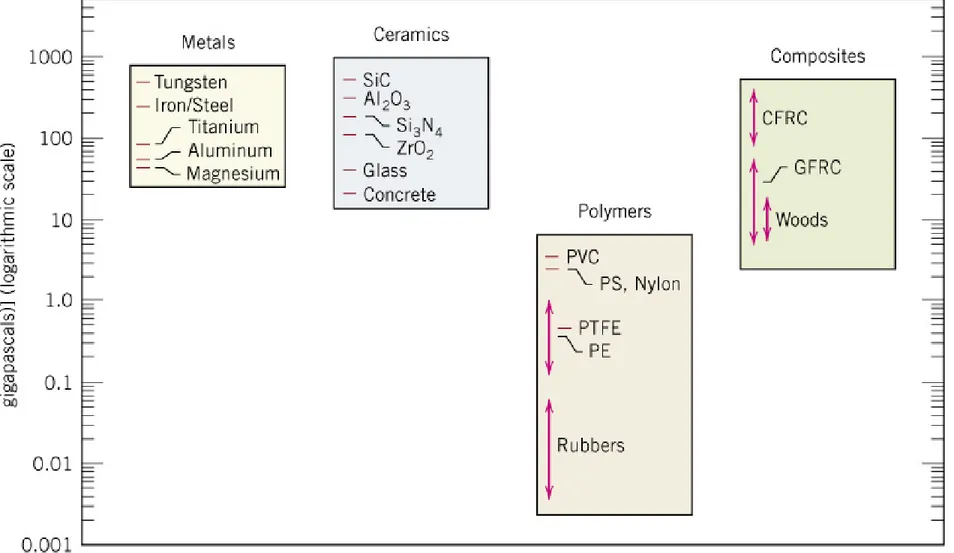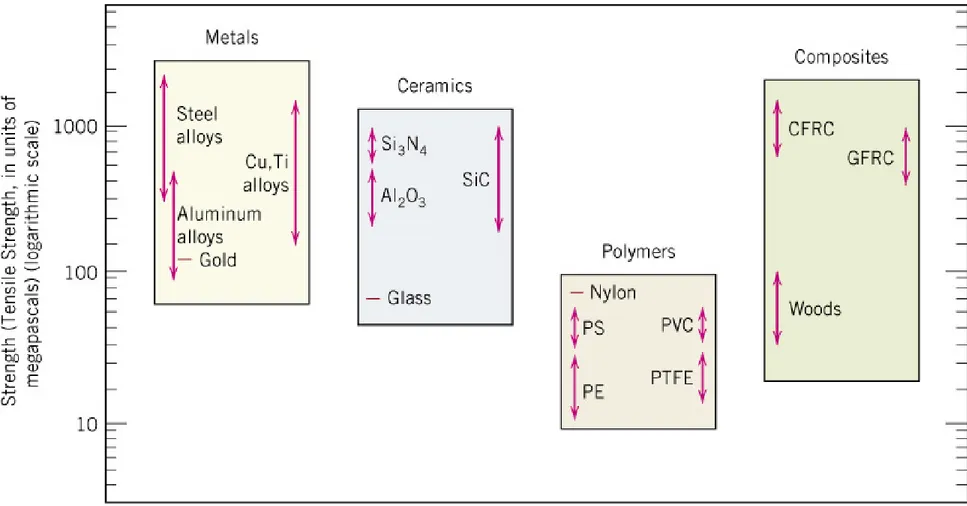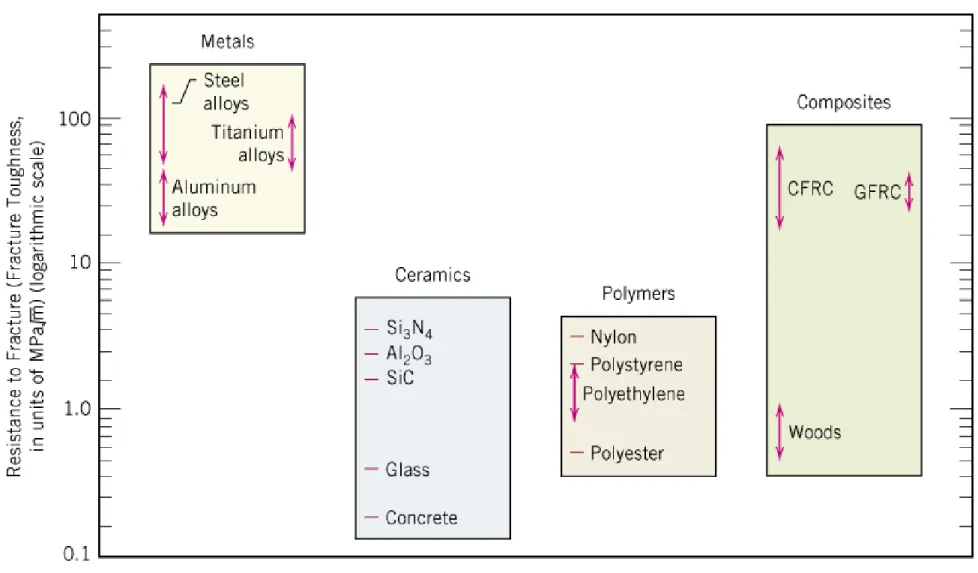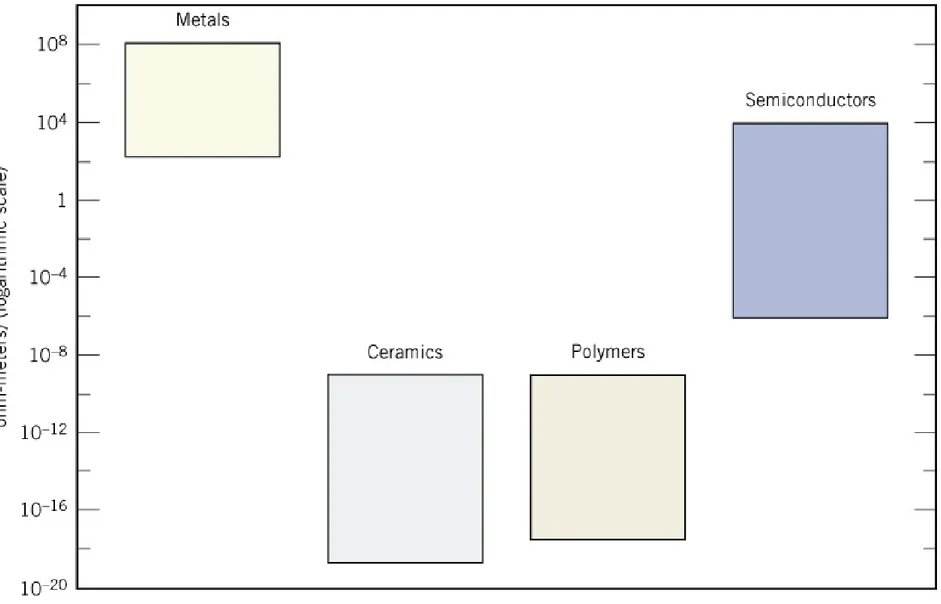Fundamentals of Materials Science and Engineering
by William D. Callister, Jr. & David G. Rethwisch, 4
thEd., John Wiley & Sons, 2013
Textbook
Materials ~ deep-seated in our culture 교통, 주택, 의류, 통신, 식품, …
문명의 발전은 재료의 발전
(Stone age Bronze age Iron age ?) 과거: 재료는 선택의 문제 (selection)
현재: 재료의 structure와 properties 사이의 관계 이해
재료 설계 (design)
Materials Science (재료과학): structure & properties of materials를 연구 Materials Engineering (재료공학): 재료과학의 기초하에 예측된
properties를 갖도록 material의 구조를 design.
• Structure (구조)
: internal components의 arrangement와 관계 large groups of atoms의 agglomeration과 관계 . Nanoscopic --- 원자 수준 (전자, 원자핵)
. Microscopic --- 현미경 . Macroscopic --- 맨 눈
• Property (성질, 물성)
: 특정한 stimulus에 대한 response의 정도를 나타내는 재료의 특성
6 categories of material properties:
mechanical, electrical, thermal
magnetic, optical, deteriorative
Fig. 1.2 Aluminum oxide (Al2O3)의 구조에 따른 광학적 성질의 차이 (a) single-crystal (sapphire) – transparent
(b) polycrystal & dense – translucent (c) “ & porous – opaque.
Fig. 1.1 재료과학에서 고려하는 4개의 요소와 상관관계.
single crystal polycrystal polycrystal:
high porosity
Classification of Materials
3대 분류: Metals (금속 재료)
Ceramics (세라믹 재료) Polymers (고분자 재료)
+ Composites, Semiconductors, Biomaterials
• Metals: metallic bonding – Strong, ductile
– High thermal & electrical conductivity – Opaque, reflective.
• Ceramics: ionic bonding – compounds of metallic & non-metallic elements (oxides, carbides, nitrides, sulfides)
– Strong, brittle, glassy
– Non-conducting (insulators)
• Polymers/plastics: covalent bonding
– Soft, ductile, low strength, low density – Thermal & electrical insulators
– Optically translucent or transparent
Fig. 1.0 다양한 콜라 용기 (a) Aluminum cans
-- (metal) (b) Glass bottles
-- (ceramic) (c) Plastic bottles
-- (polymer).
Fig. 1. 8 금속 및 금속 합금(metal alloys)으로 만들어진 제품.
Fig. 1.9 세라믹 재료로 만들어진 제품.
Fig. 1.10 고분자 재료로 만들 어진 제품.
Fig. 1.3 Metals, ceramics, polymers & composites의 상온 밀도.
Fig. 1.4 Metals, ceramics, polymers & composites의 상온 강성도(stiffness).
Fig. 1.5 Metals, ceramics, polymers & composites의 상온 강도.
Fig. 1.6 Metals, ceramics, polymers & composites의 상온 파괴 강인성(fracture toughness).
Fig. 1.7 Metals, ceramics, polymers & composites의 상온 전기전도도.
